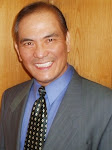
ACTIVE LISTENING
My favorite author, Stephen Covey, was the first who made me realize that listening is a skill that should have been taught early on along with reading, writing, and speaking. To paraphrase him, we spent years learning how to read; years learning how to write; weeks, sometimes months, rarely years learning how to speak. But how much time was spent formally teaching us how to listen?
Hardly at all, if you’re like 99%+ of the population.
Catch yourself this very moment and count the number of simultaneous conversations you’re having in your mind. Should we be surprised therefore at how difficult it can be to listen correctly?
Catch yourself next time you’re conversing. Have you already created your response before the other person has finished speaking? That might work some of the time but when you interact with a larger and more diverse group of people, that communication pattern—of creating your response before the other person has finished speaking—will be the cause of mistakes and interpersonal problems.
A COMMUNICATION SKILL THAT SHOULD BE DEVELOPED
Active listening is a skill—a communication skill like speaking, reading, and writing that should be developed.
I made it a personal goal. One of the best and natural ways it developed for me was through my active participation in my Toastmasters club meetings. Click here for that blog entry.
Many articles have been written about this. I’ve shared my personal view. Now follows my edited compilation of tips from Verzuh’s excellent book, The Fast Forward MBA in Project Management (Wiley, 2008).
A USEFUL LIST OF LISTENING TIPS
These tips can be practiced as you listen to others—whether in a one-on-one discussion or during a meeting.
- Focus yourself physically. To the degree possible, eliminate environmental distractions. (If you’re writing, stop. If you’re eating, stop. You get the picture.)
- Use nonverbal cues to show you are invoked in what the speaker is saying, including nodding your head, making eye contact, and leaning forward.
- Provide feedback, paraphrasing or summarizing the speaker’s statements to ensure that you understand them as the speaker intended.
- Ask relevant follow-up or clarifying questions.
- Listen for the idea behind the facts and data.
- Suspend judgment on the speaker’s statements. Understand his or her point first. As you ask questions or acknowledge points, remain neutral in your responses. “So, what you are saying is ...” or “From your point of view ...” Demonstrate that you understand without revealing whether you agree or disagree.
During active listening, work to avoid these behaviors.
- Don’t try to solve the problem or give advice until it’s asked for. Analyzing a problem with questions shifts the focus from the speaker to your hypothesis. “Have you tried ...?” or “What happened before ...” or “Are you sure that’s the issue?” You may be able to help the speaker solve a problem, but first you need to listen.
- Don’t judge what you’re hearing—either positively or negatively. In particular, don’t share a judgment, as in, “That's not logical.”
- Don’t shift the attention to yourself. This happens when we try to relate to the speaker, but end up talking about our own experiences, ideas, or emotions.
- Finally, be aware of resistance and defensiveness by the speaker. Probing too deeply or playing the psychiatrist may not be welcome.
These simple guidelines can get you started. As with any skill, your ability to listen will improve with practice.
In the process of researching this, I came across this excellent article from an equally excellent blog by Alexander Kjerulf. He calls himself the CHO or Chief Happiness Officer. I think that's pretty clever. Every organization should have one.
I should also mention the Talking Stick. It was inspired by my favorite author again, Stephen Covey.



No comments:
Post a Comment